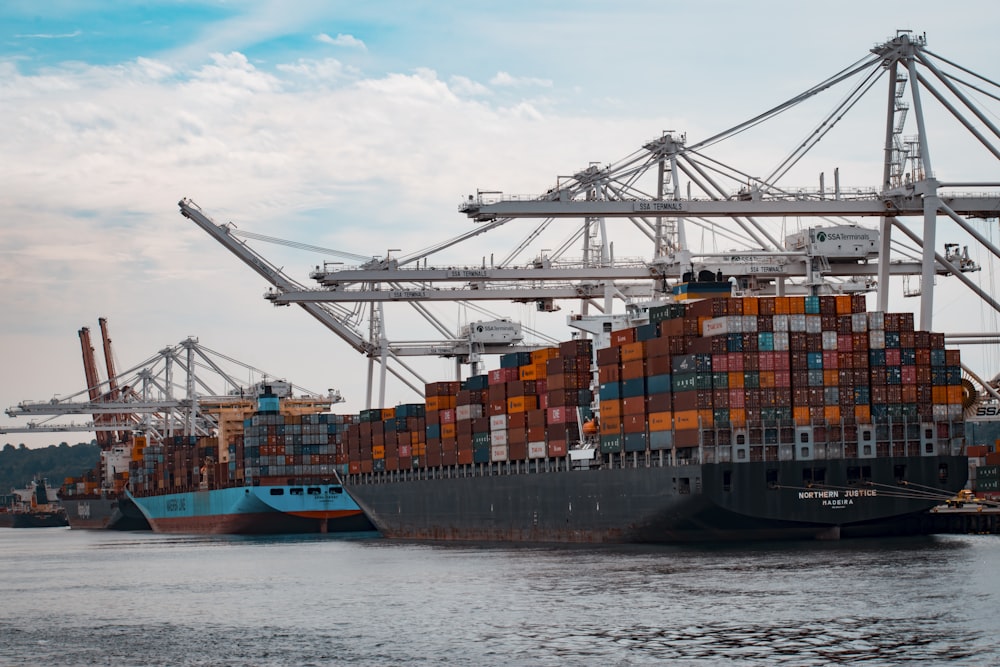International Shipping Rates Headed Up Long Term
Image Source: Unsplash
International shipping costs have risen over the past 18 months for many types of products. This contrasts with the decades-long era of declining inflation-adjusted costs. The most recent run-up was influenced by Houthi attacks on ships in the Red Sea, leading most vessels to take the longer Cape of Good Hope route between East Asia and Europe. The Red Sea problem followed low water in the Panama Canal system, which reduced the number of transits and led some ships to longer alternative routes.
The near-term outlook for rates is favorable for shippers, but longer-term trends not so much.
Shipping expert Sal Mercogliano explained to me in a video call that rising environmental standards and the obsolescence of the existing fleet will require more new ships to be built and to travel slower. The International Maritime Organization now requires ships to log their carbon emissions. Vessels with poor scores will not be allowed in many ports, including in Europe. Compliance will require new ships.
Already many ships are “slow steaming” to reduce fuel usage. As in a car, slower speed reduces a ship’s fuel consumption per mile traveled. However, a ship built for slower speeds is even more fuel efficient than a ship designed for fast travel that cuts its speed. Optimization for slow steaming involves both the hull design and the engine system, not amenable to after-market fixes according to Mercogliano. Also, new ships are often specified with “dual fuel” systems, to add methanol, ammonia or liquified natural gas as alternatives to diesel fuel. Different fuels are produced with differing amounts of energy, and they also release differing amounts of carbon per unit of energy. The alternative fuels can be more environmentally friendly.
Outside of shipping, new goals and standards to reduce global warming have been relaxed or delayed as the costs became clearer. Mercogliano doubts this will happen to maritime rules, at least for the immediate future.
Slower steaming means that more shipping capacity will be needed to move a given volume of cargo. Add in the need to scrap older, less efficient vessels, and lots more ships must be built.
Thankfully, the shipbuilders are enjoying an boom in orders. The BRS Annual Review, which covers ship activity in great detail, reports that total tonnage of ships ordered in 2023 jumped 16% over the previous year’s figure. The division was roughly typical, with bulk carriers the largest, followed by tankers. Container ships and other types make up the total. News reports over the first half of 2024 show orders continuing strong.
At first blush, the increasing orders for new ships could signal an overbuilding cycle. Capital-intensive industries, including not only shipping but also airlines, paper manufacturing, real estate, and semiconductors, are prone to overbuild periodically. Good prospects for the industry lead many participants to expand. The industry as a whole ends up with too much capacity. Then companies cut prices to get what they can from their equipment, even if they are unable to cover their fixed costs.
With the need to comply with environmental regulations, Mercogliano believes the industry is not overbuilding. In recent times, however, he thinks ship owners have been under-scrapping. That is, they are keeping older ships in service longer than they normally would. Current high rates justify that for many types of ships. And older tankers, in particular, are becoming part of the “dark fleet” used to move Iranian and Russian crude oil to China and other countries. Continued sanctions against these countries will prop up the value of older tankers.
Shippers who casually follow industry trends must keep in mind that ships are specialized. In a harbor one may see a container ship headed to a pier, a bulk carrier filling up with grain, a tanker unloading refined products, and cars exiting a roll-on/roll-off carrier. These ships are specialized, and a surplus of one type cannot be used to ease a shortage of another type. There are even subdivisions within each type.
Mercogliano offered a valuable insight for business leaders in the general economy: Small disruptions have large impacts because the shipping industry doesn't have a lot of slack in it. For example, the Suez Canal obstruction in 2021 was cleared in six days, but the supply chain disruptions lasted six months. What we need, he said, is not a supply chain but a supply web, resilient in the face of unexpected changes.
More By This Author:
Consumers Don’t Like Inflation, Will Be CautiousHomeowner Insurance Costs Will Come Down Just A Little
Interest Rates: What The Fed Is Thinking




